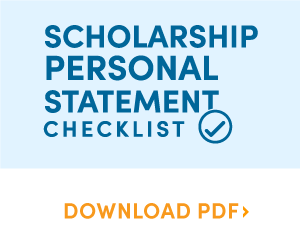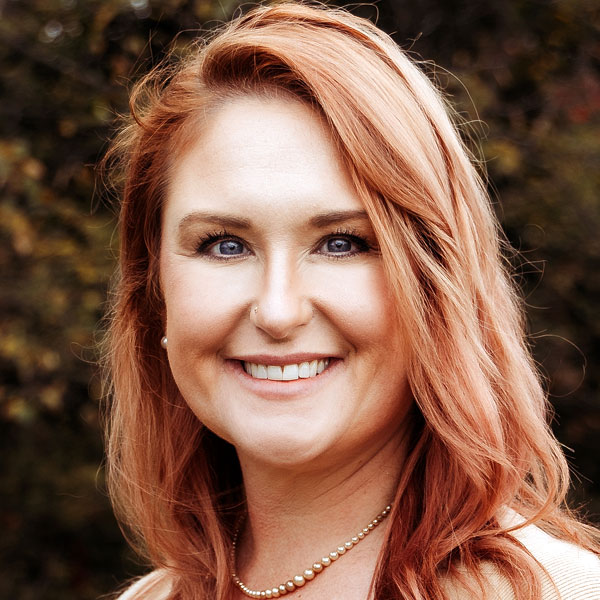Looking to
win a scholarship? One of the most important steps is crafting a strong personal statement. A personal statement focuses on your background, goals, and character. A scholarship essay often answers a prompt or question. It's your chance to show scholarship committees who you are beyond grades and test scores.
Whether you're in high school or already in college, this guide will walk you through how to write a personal statement for scholarships that stands out, with real examples, step-by-step tips, and answers to common questions.
Key Elements of a Winning Personal Statement
Most personal statements for scholarships are typically 500–750 words. To create a standout personal statement, you'll want to be authentic and start with a compelling hook. The statement hook can be a personal story, a quote, or a unique experience. Include your specific goals and show your passion in your statement.
A Compelling Opening
Start strong. Your first sentence should hook the reader, just like the opening line of a great story. Think of a vivid moment, a surprising fact, or a personal truth that sets the tone.
An example hook could be, "Every morning before school, I folded egg rolls in my family's kitchen — not just to help, but to keep the lights on."
A Personal Story that Shows Character
Colleges and scholarship committees want to know who you are, not just what you've done. Share a meaningful moment that highlights your work ethic or growth.
Academic and Career Goals
Clearly explain your educational goals and how they connect to
your future career. Keep things authentic by being specific. For example, instead of, "I want to help people," say, "I want to become a licensed clinical social worker to support children in foster care."
Financial Need
Many students and families experience financial struggles; be honest but tactful when
explaining your financial situation. A candid story helps the committee understand why the scholarship would make a difference for you.
A Memorable Conclusion
Wrap up your statement with gratitude and confidence. Reinforce how the scholarship will
help you give back and achieve your goals
Step-by-Step Guide to Writing Your Personal Statement
There are five steps you can take to write a good personal statement. As you work on each step listed below, consider using power words like, "determined, "committed," "resilient," "aspire," "motivated," and "impact" throughout.
Brainstorming Get started on your statement with a brainstorm session. The questions below will help you refine your approach and craft the ideal statement. Ask yourself (and write down your thoughts):
• What challenges have I overcome?
• What achievements am I most proud of?
• What experiences shaped my goals?
Outline the Structure Use a clear structure:
• Introduction – Share your hook and background.
• Body Paragraphs – Include your personal story, goals, and financial need.
• Conclusion – Wrap it up with a sense of gratitude and your forward-looking statement.
Write Your First Draft With this step, don't worry about perfection. Focus on getting your ideas down. Use authentic language in your voice.
Review and Polish Once you're done, it's important to set it aside for a few hours, maybe even a day. Read it out loud. This allows you to revisit it with a fresh mindset and edit for clarity, grammar, and tone. Make sure you have it proofread; ask a teacher, counselor, or friend to review it.
Tailor it to Each Scholarship While you can repurpose many components, customize your statement for each scholarship application. Include keywords or values that align with the scholarship sponsor or organizational mission.
Scholarship Personal Statement Examples
Example for an Undergraduate STEM Scholarship:
"Growing up in a rural town, my internet access came from sitting outside the public library after hours. That's where I taught myself how to code. Now, as a first-generation college student studying computer science, I want to build tools that make education accessible to all."
Why It Works: It features a story-like opening, highlights personal challenges, showcases academic goals, and aligns with the scholarship's focus on technology and access.
Example for an Undergraduate Creative Arts Scholarship:
"The first time I turned my sketchbook into a story, I was sitting under the bleachers during lunch, drawing characters to escape a loud Kansas City Middle School. That comic started as a coping tool and later became my calling. Like the great Walt Disney, who was also a KC native, I'm pursuing a degree in visual storytelling to create inclusive, character-driven animations that help kids see themselves on screen."
Why It Works: It opens with a personal and historic connection, a unique story that reveals the applicant's passion, growth, and clear creative goals.
Common Mistakes to Avoid
There are six common mistakes students make when writing their statements. Avoid these errors:
• Being too generic: Don't write simplistic statements like, "I just want to help people."
• Reusing your resume: This doesn't reflect your voice or share your story.
• Using cliché phrases: Avoid using phrases such as, "Since I was a child…".
• Focusing only on struggles without showing growth: Showcase your resilience and share your big accomplishments.
• Forgetting to proofread: Every good writer knows there are typically mistakes in a first draft, even a second or third draft. Asking someone else you trust to review your statement provides a new set of eyes and perspective. Ask your
high school counselor or college advisor to edit your statement.
• Writing way too much or too little: Follow scholarship application directions. The number one reason why most scholarship applications and supplements are rejected is that the directions were not followed. Aim for 500 –750 words if a word count is not provided.
Your personal statement is not an essay—it's who you are, and your why. With thoughtful writing and reflection,
your words can open the door to genuine financial support; remember, unlike
student loans, scholarships do not require repayment.
your words can open the door to genuine financial support; remember, unlike
Create your free Fastweb profile to find scholarships that fit your personal statement. Your Fastweb profile uses your passions, interests, and background to match you to the scholarships you should apply for. Use the time you save to write your statement!


